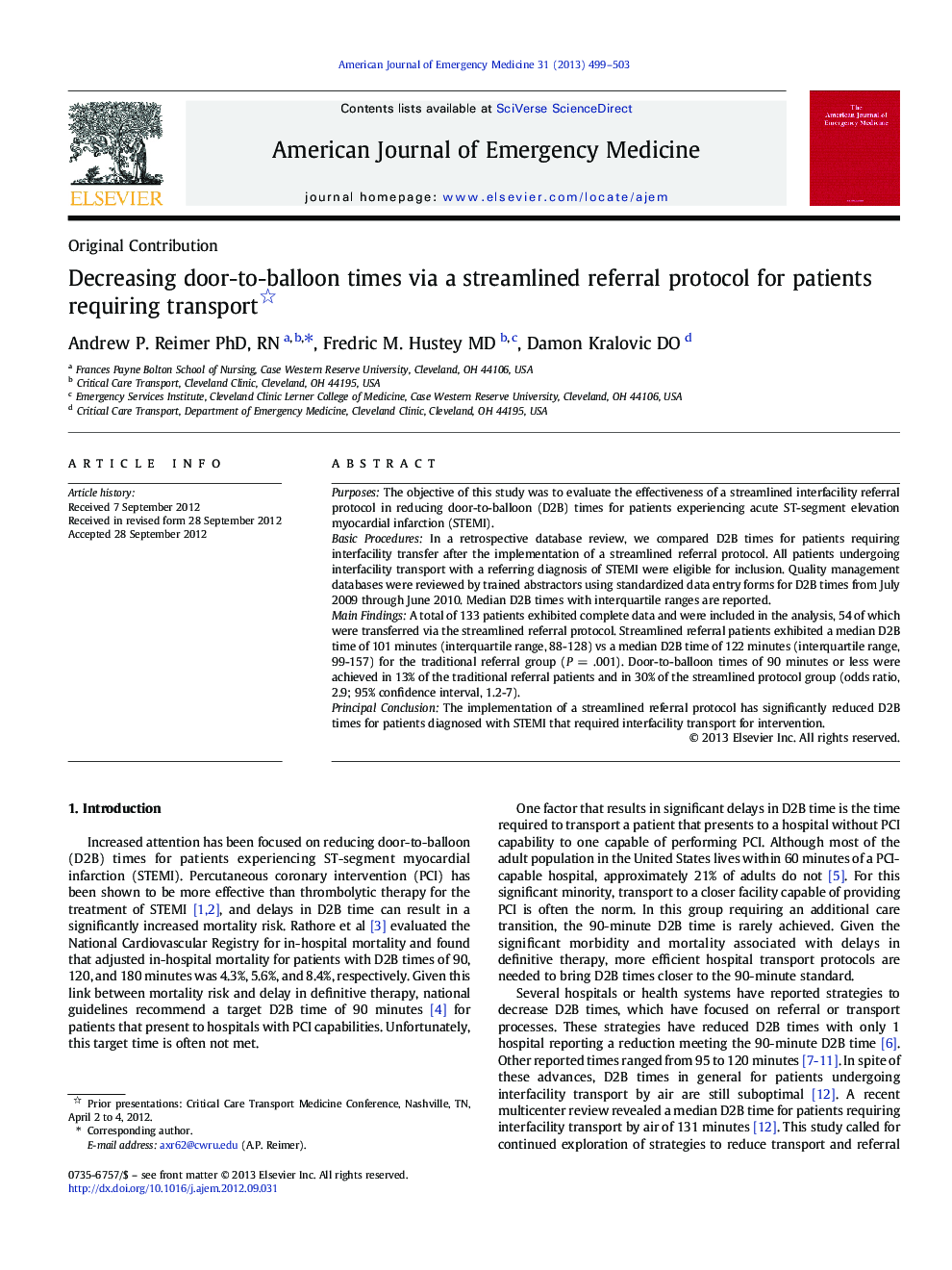| کد مقاله | کد نشریه | سال انتشار | مقاله انگلیسی | نسخه تمام متن |
|---|---|---|---|---|
| 3223819 | 1588132 | 2013 | 5 صفحه PDF | دانلود رایگان |

PurposesThe objective of this study was to evaluate the effectiveness of a streamlined interfacility referral protocol in reducing door-to-balloon (D2B) times for patients experiencing acute ST-segment elevation myocardial infarction (STEMI).Basic ProceduresIn a retrospective database review, we compared D2B times for patients requiring interfacility transfer after the implementation of a streamlined referral protocol. All patients undergoing interfacility transport with a referring diagnosis of STEMI were eligible for inclusion. Quality management databases were reviewed by trained abstractors using standardized data entry forms for D2B times from July 2009 through June 2010. Median D2B times with interquartile ranges are reported.Main FindingsA total of 133 patients exhibited complete data and were included in the analysis, 54 of which were transferred via the streamlined referral protocol. Streamlined referral patients exhibited a median D2B time of 101 minutes (interquartile range, 88-128) vs a median D2B time of 122 minutes (interquartile range, 99-157) for the traditional referral group (P = .001). Door-to-balloon times of 90 minutes or less were achieved in 13% of the traditional referral patients and in 30% of the streamlined protocol group (odds ratio, 2.9; 95% confidence interval, 1.2-7).Principal ConclusionThe implementation of a streamlined referral protocol has significantly reduced D2B times for patients diagnosed with STEMI that required interfacility transport for intervention.
Journal: The American Journal of Emergency Medicine - Volume 31, Issue 3, March 2013, Pages 499–503